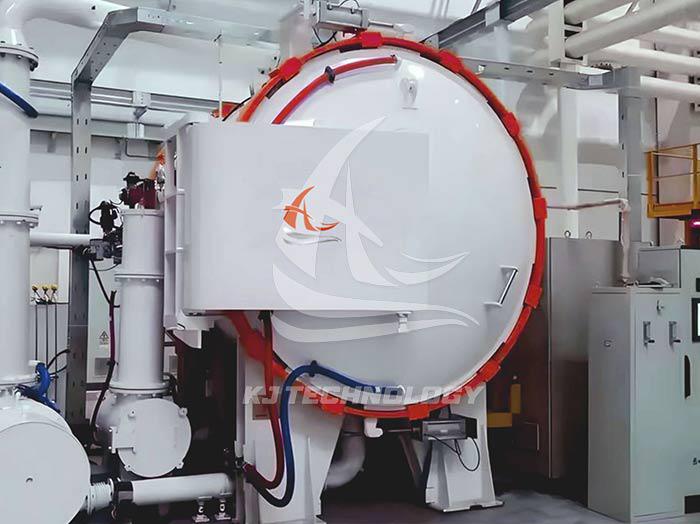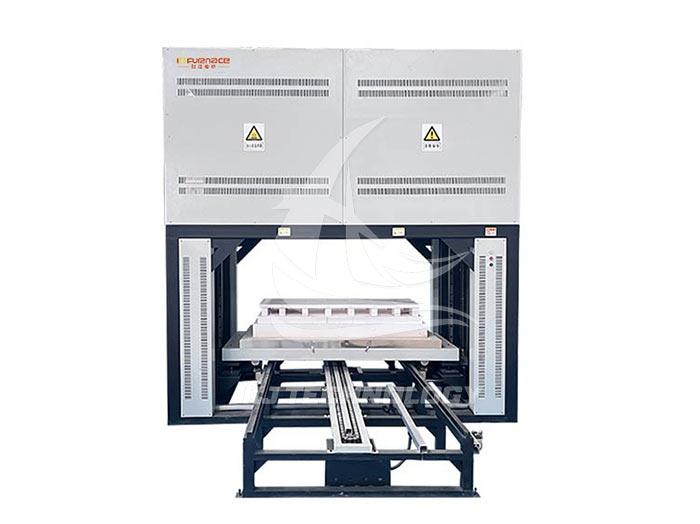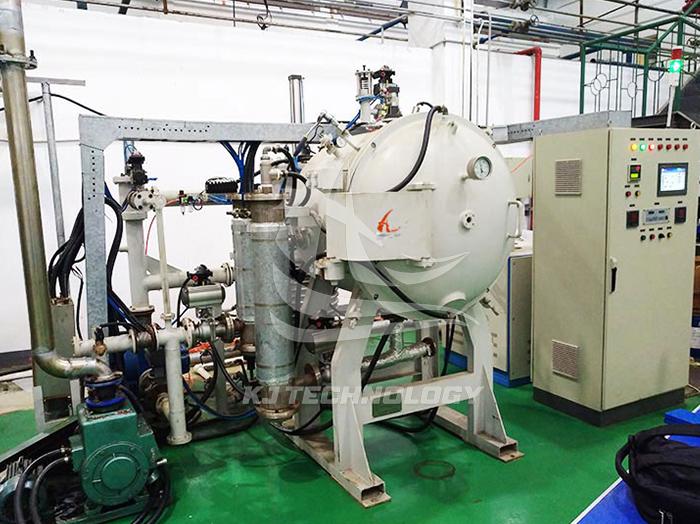High vacuum brazing electric furnace
 10-31-2025 Author: KJ technology
10-31-2025 Author: KJ technology
High vacuum brazing electric furnace is a key equipment used for brazing process experiments in high-temperature vacuum environments. It has precise temperature control, extremely high vacuum degree, and the ability to quickly raise and lower temperatures. It is suitable for brazing various metals and composite materials and plays an important role in aerospace, automotive industry, and other fields.
1. Equipment features
High vacuum degree: The ultimate vacuum degree of the high vacuum brazing electric furnace can reach 6.67 × 10-4Pa, or even higher, providing a pure environment for the brazing process, avoiding phenomena such as oxidation, decarburization, and carbonization of the workpiece at high temperatures. The welding points are bright and clean, and do not require subsequent cleaning.
Accurate temperature control: The equipment has precise temperature control capabilities, with a temperature control accuracy of ± 1 ℃, ensuring that the brazing process is carried out within the optimal temperature range and improving welding quality.
Rapid heating and cooling: High vacuum brazing electric furnaces can achieve rapid heating and cooling, shorten production cycles, and improve production efficiency.
Modular design: The equipment adopts a modular design, which is easy to maintain and upgrade, while improving the flexibility and applicability of the equipment.
2. Application Fields
Aerospace: High vacuum brazing electric furnaces have a wide range of applications in the aerospace field, such as brazing key components such as engine parts, turbine blades, heat exchangers, fuel nozzles, etc. Its high vacuum degree and precise temperature control capability ensure the strength and airtightness of the welded joint, meeting the demand for high-quality welding in aerospace products.
Automotive industry: In the automotive industry, high vacuum brazing electric furnaces are mainly used for brazing components such as aluminum alloy heat exchangers, stainless steel heat exchangers, and oil coolers. It can improve the heat exchange performance of products while reducing production costs, promoting the lightweight development of the automotive industry. For example, a certain automobile company in the United States uses vacuum brazing technology to produce aluminum radiator cores, significantly improving the performance and lifespan of radiators.
Electronics industry: High vacuum brazing electric furnaces also have important applications in the electronics industry, such as brazing high-precision electronic components such as circuit boards, connectors, and semiconductor devices. It can ensure the stability and reliability of welded joints, and improve the performance and lifespan of electronic products.
Other fields: High vacuum brazing electric furnaces are also suitable for vacuum tempering of materials such as high-speed steel, tool and mold steel, bearing steel, stainless steel, as well as aging and annealing treatment of non-ferrous metals. At the same time, it has a wide range of applications in diamond tools, PDC oil drill bits, and cutting tools made of various hard materials.
3. Working principle
The working principle of a high vacuum brazing electric furnace is to heat the metal material together with the brazing material with a melting point lower than the base material in a vacuum environment to a temperature range higher than the melting point of the brazing material but lower than the melting point of the base material. At this time, the base material remains in a solid state, and the liquid brazing material is filled into the joint gap of the workpiece by capillary action. Through mutual diffusion with the base material, metallurgical bonding is formed, ultimately achieving high-strength connection of the workpiece.
4. Equipment composition
The high vacuum brazing electric furnace is mainly composed of a vacuum system, a heating system, a temperature measurement and control system, a cooling system, and an automation control system.
Vacuum system: composed of a vacuum chamber, pump system, control valve, and heat exchanger, responsible for creating and maintaining a high vacuum environment.
Heating system: using methods such as resistance heating, induction heating, or microwave heating to provide the required heat for the brazing process.
Temperature measurement and control system: equipped with vacuum measurement equipment such as resistance gauges and ionization gauges, as well as temperature measurement equipment such as thermocouples, to monitor and display the vacuum degree and temperature inside the furnace in real time, ensuring that the brazing process is carried out under optimal conditions.
Cooling system: provides cooling support for all components that require heat dissipation, such as furnace shells, electrodes, vacuum pumps, etc., to ensure safe operation of the equipment.
Automation control system: The automation control system adopts PLC (programmable logic controller)+touch screen (human-machine interface HMI) to achieve fully automatic or manual operation, edit, store and call brazing process curves, monitor and record all process parameters in real time, have fault diagnosis and alarm functions, and can generate data reports.
5. Advantages
Improving product quality: The high vacuum environment avoids phenomena such as oxidation, decarburization, and carbonization of workpieces at high temperatures. The solder joints are bright and clean, without the need for subsequent cleaning, improving the appearance quality and internal performance of the product.
Reduce production costs: Vacuum brazing does not require flux, significantly improving the corrosion resistance of the product, eliminating various pollution and pollution-free treatment equipment costs, and providing good safety production conditions. At the same time, it saves a large amount of expensive metal flux and does not require complex flux cleaning processes, reducing production costs.
Improve production efficiency: High vacuum brazing electric furnaces can achieve rapid heating and cooling, shorten production cycles, and improve production efficiency. At the same time, its high degree of automation reduces manual operations and further improves production efficiency.
Expanding application scope: There are many materials suitable for vacuum brazing, such as aluminum, aluminum alloy, copper, copper alloy, stainless steel, alloy steel, low carbon steel, titanium, nickel, Inconel, etc., which can be brazed in a vacuum electric furnace. At the same time, metal and non-metal can be brazed together, with good airtightness and mechanical properties.








